Stepping into the world of photography can be exciting and overwhelming at the same time. With so many cameras to choose from, all boasting impressive features and technical jargon, it can be tough to know where to begin. But fear not, aspiring photographer! This guide is here to unveil the best beginner cameras on the market, offering options to suit every budget and interest. Whether you crave crystal-clear landscapes or dream of capturing life’s candid moments, we checked nine expert reviews to see which are the five best beginner cameras that most often appeared on the pros’ lists. Of course, we want to know which camera is your favorite, so comment below to let us know!
The List: Best Beginner Cameras, According to Photography Experts
1. Nikon D3500
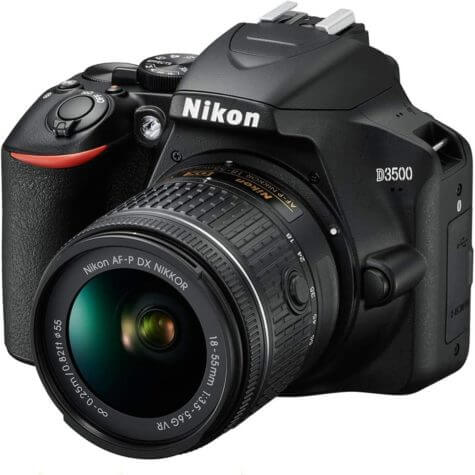
The hunt for your first camera can feel like navigating a jungle of technical terms and fancy features. But fret no more, aspiring photographer! This particular DSLR has been praised by experts for being the perfect entry-level camera, appearing on countless “best beginner camera” lists.
Here’s what makes it stand out: think of it as a camera with training wheels! It boasts a user-friendly “Guide Mode” built right into the dial. This genius feature acts like a friendly photography coach, walking you through the camera’s functions in a clear and concise way. So you can learn the ropes and capture stunning photos simultaneously – no technical jargon required (RTINGS).
Another perk? This camera is sold bundled with two lenses, an 18-55mm for wider-angle shots, and a 70-300mm telephoto so you can zoom in on those far off objects. Right out of the gate you’re covered for just about every focal length you could want and need. Essentially, you’re covered for nearly any photo scenario you can imagine!
Now, let’s talk about the technical specs. According to ZD Net, this camera boasts a powerful 24.2MP sensor, an image processor that translates to impressive photo quality, Bluetooth connectivity for easy sharing, and a strong video capture function. Plus, it can shoot at five frames per second with an impressive ISO range, allowing you to capture clear photos even in low-light settings.
2. Olympus OM-D E-M10 Mark IV
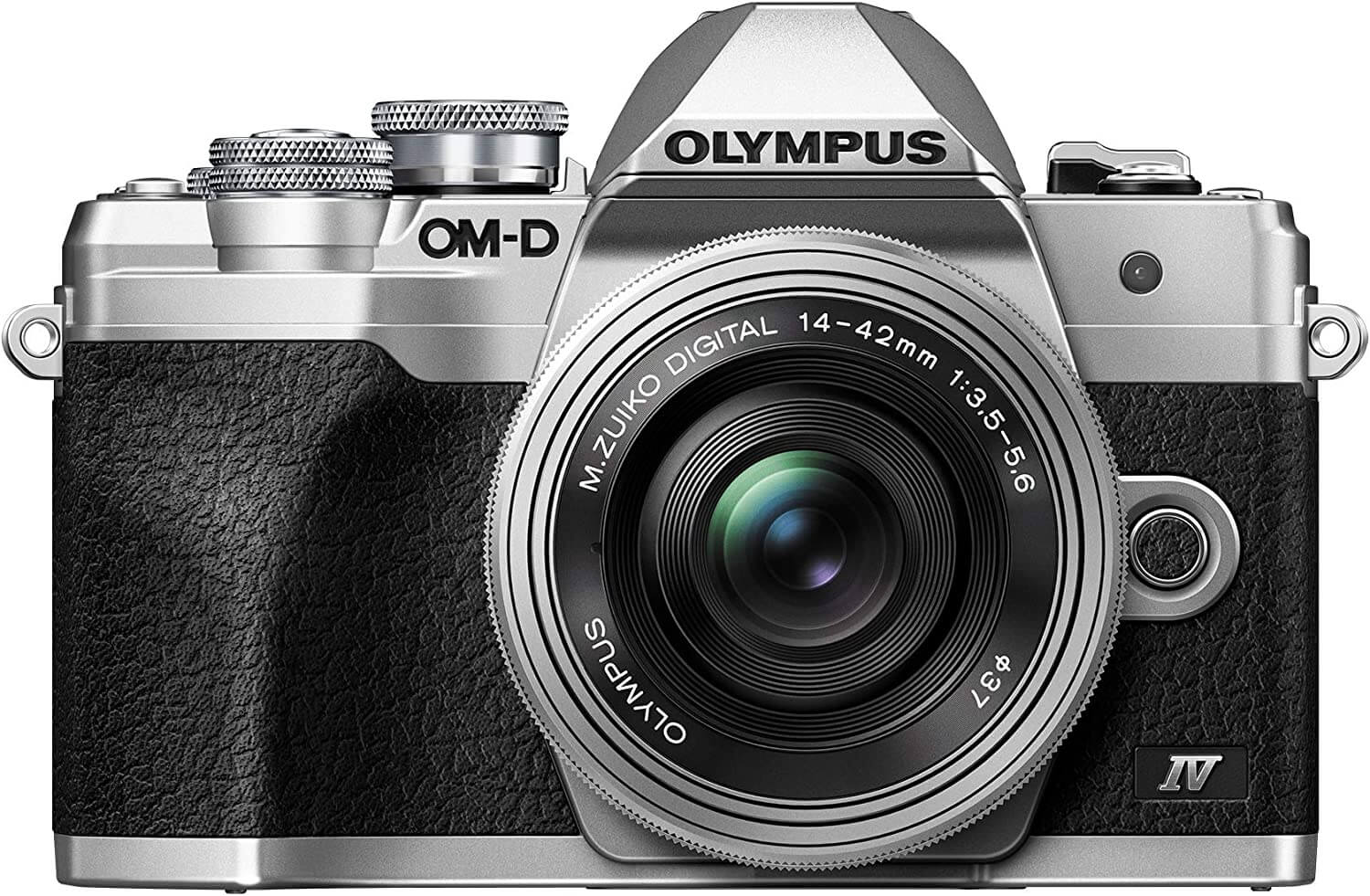
Ready to ditch your phone camera and step up your photography game? Tech Radar hails this mirrorless camera as the ideal choice for smartphone photographers looking to make the leap. Its design is both comfortable and familiar, with an ergonomic grip and easy-to-access buttons that won’t overwhelm you with complexity. Think of it as a camera designed with beginners in mind, wrapped in a classic, stylish shell.
But don’t be fooled by its user-friendly design – this camera packs a punch! Tech specs include a powerful 20.3-megapixel sensor for crisp, high-quality photos, and the ability to shoot stunning 4K videos at 30 frames per second. Plus, the three-inch tilting touchscreen lets you frame your shots from creative angles, and the 15fps burst mode lets you capture fleeting moments with incredible detail.
Worried about all those fancy camera settings? Fear not! This Olympus camera has 21 scene modes that take the guesswork out of capturing the perfect picture. Simply select the mode that matches your environment, and the camera will automatically adjust the settings for you. So you can focus on composing your shot and letting your creativity flow! From breathtaking landscapes to captivating close-ups, this user-friendly mirrorless camera is your gateway to stunning photography (Space.com).
3. Sony a6000
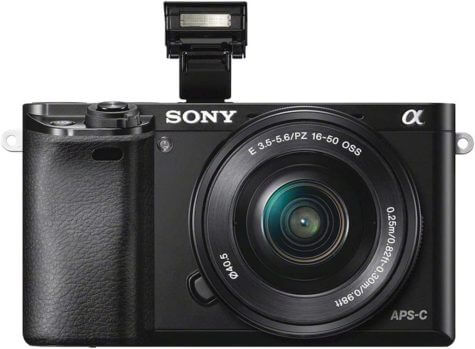
Here is another mirrorless camera option, and you can find it bundled with a 16-55mm lens. We did a little digging and found that you can purchase this camera bundled with both the 16-55mm lens and a 55-210mm lens, which will allow you to capture scenes both close up and far off.
With this camera, the LCD screen can aid you in honing your skills. Shotkit raves about its incredible live viewfinder display. Here’s the magic: any adjustments you make to your camera’s settings, like ISO, aperture, and shutter speed, are instantly reflected in the viewfinder preview before you take the shot.
This camera has 24.2MP, a three-inch tilting LCD screen, shoots up to 11fps, and offers full HD video taking abilities. But that’s not all this Sony camera has to offer. According to Today, it boasts exceptional low-light performance, thanks to its cutting-edge technology. So you can ditch the flash and capture beautiful, clear photos even in dimly lit environments, or even at night! This opens up a whole world of creative possibilities, from capturing the ambiance of a candlelit dinner to freezing the action of fireflies dancing in the twilight.
4. Canon EOS Rebel SL3
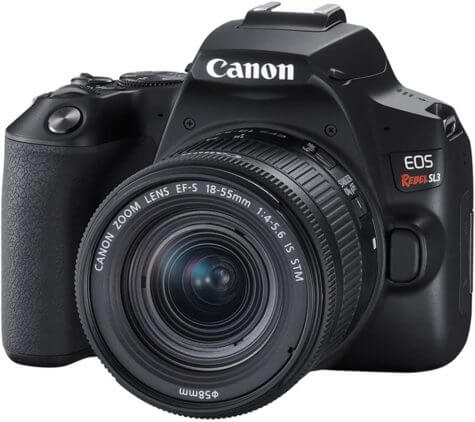
Contemplating a camera that’s a step above the basics? While Digital Camera World acknowledges it has a slightly higher price tag, they believe the upgraded features are absolutely worth the investment. Here’s why: you’ll be getting Canon’s top-of-the-line APS-C sensor, capturing stunning 24.1-megapixel photos brimming with detail. Plus, get ready to embrace the magic of Live View shooting with a fully articulating touchscreen display – think of it as composing your shots from any angle imaginable! Canon’s renowned Dual Pixel CMOS AF autofocus will ensure your photos are always crisp and sharp, even when capturing fast-moving subjects.
Let’s talk heritage. Canon cameras are a favorite among professional photographers for a reason – they’ve been at the forefront of innovation since 1934! That rich history translates into a reliable, high-quality camera you can count on to capture those special moments.
And if you ever crave a break from still photography, this Canon EOS has you covered! The New York Times highlights its impressive 4K video capabilities. Plus, the intuitive touchscreen display makes filming feel familiar and effortless – just like using your smartphone! So, whether you’re capturing breathtaking landscapes or heartwarming family moments, this Canon EOS is a powerful tool to elevate your photography journey.
5. Panasonic Lumix G100
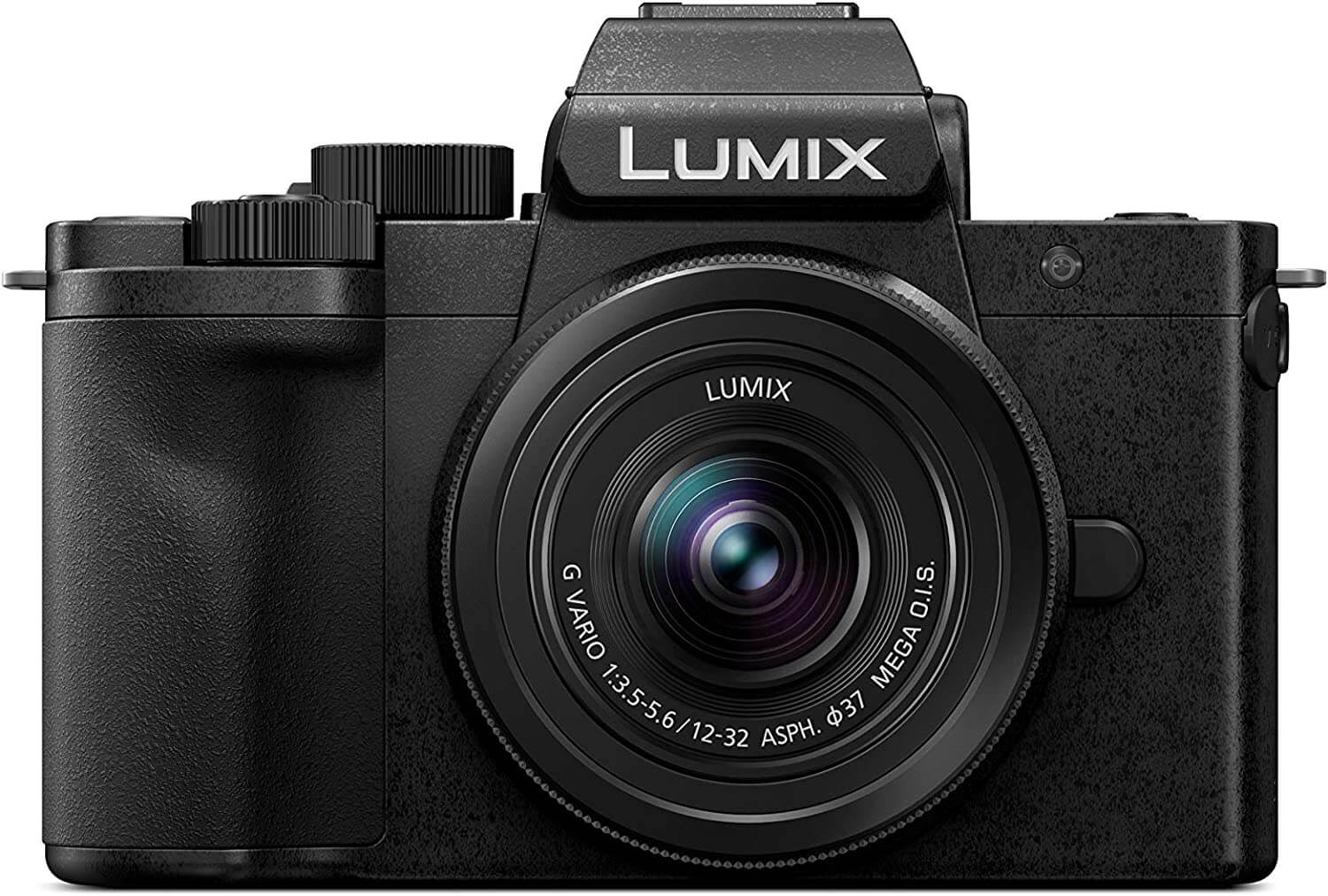
Rounding out our list is a Panasonic camera that Creative Bloq hails as a “must-have” for social media enthusiasts. This little wonder is the perfect companion for creators on the move, thanks to its ultra-compact size that allows you to effortlessly capture captivating photos and videos anywhere inspiration strikes!
Don’t let its small stature fool you, though! This camera packs a punch with 20.3 megapixels, ensuring your social media feed stands out with crisp, high-quality content. Plus, the three-inch vari-angle screen lets you frame your shots from creative angles and monitor your recordings with ease – perfect for those trendy overhead flat lays or capturing yourself in action for vlogs! Speaking of vlogging, Digital Camera World likes this camera’s user-friendly design, making it a breeze to use even if you’re a complete beginner. They rave about its simplicity, allowing you to focus on expressing your creativity and letting the camera handle the technical aspects! So, whether you’re a budding food photographer or a fashionista on the rise, this Panasonic camera is a powerful tool to amplify your social media presence.
Tips for Choosing a Beginner Camera:
- Sensor Size: Opt for cameras with larger sensors (APS-C or Micro Four Thirds) for better image quality and low-light performance.
- Ease of Use: Choose a camera with user-friendly controls and a straightforward menu system to make the learning process smoother.
- Auto Modes: Look for cameras with intelligent auto modes that help beginners capture great shots without diving into manual settings immediately.
- Lens Compatibility: Consider a camera with a variety of compatible lenses to allow for future growth and experimentation as your photography skills develop.
- Image Stabilization: Prioritize cameras with in-body or lens-based image stabilization to reduce the impact of shaky hands, especially in low-light conditions.
- Viewfinder vs. LCD Screen: Decide between cameras with optical viewfinders for a traditional shooting experience or those with tilting LCD screens for more flexibility in composing shots.
- Weight and Size: Opt for a compact and lightweight camera, making it easier to carry and handle, especially for beginners on the go.
- Autofocus Performance: Look for cameras with reliable and fast autofocus systems, crucial for capturing sharp images, especially when shooting moving subjects.
- Wireless Connectivity: Consider cameras with built-in Wi-Fi or Bluetooth for easy transfer of photos to a smartphone or tablet, enhancing your ability to share your work online.
- Battery Life: Check the camera’s battery life to ensure it can last through a day of shooting without frequent recharging.
- Budget Considerations: Set a realistic budget and explore cameras within that range, considering not only the initial camera purchase but also potential additional costs for lenses and accessories.
Sources:
- RTINGS
- ZD NET
- Tech Radar
- Space.com
- Shotkit
- Today
- Digital Camera World
- The New York Times
- Creative Bloq
Note: This article was not paid for nor sponsored. StudyFinds is not connected to nor partnered with any of the brands mentioned and receives no compensation for its recommendations. This article may contain affiliate links in which we receive a commission if you make a purchase.
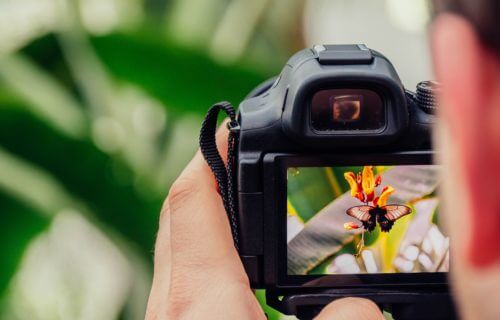
Love to use my Canon 200d with 70-300 mk2 most of the time, notso heavy and bulky and obtain good quality photos.
As a professional photographer for many years, I have questions that beginners need to consider before the excellent list presented above.
1 – Is the shutter release in the correct position for you? Most cameras require an index finger to press the button and take a picture. Are you more comfortable using your left or right index finger? Once you pick one side, you have eliminated about 1/2 of your possible choices. There are good cameras of both types, but you will not be happy choosing an excellent camera if the shutter release is on the “wrong” side or the “wrong” position. It will haunt you every time you pick up the camera.
2—Can you understand the markings on the camera? Cameras use words, abbreviations, or symbols. If you don’t know the language or understand the symbols, you will quickly tire of needing the manual every time you pick up the camera. This will drain all the fun out of taking pictures.
3 – Does it have a fully automatic mode? There are occasions when there is no time to focus, frame, adjust, and fiddle before each picture. Old-time photographers “just know” a few settings they can use based on where they are and the subject, but when they were beginners, they missed many pictures because they guessed wrong. It is much better if a beginner has a fully automatic mode for those times when a picture is an absolute “must take.” Just don’t get lazy and leave it on auto all the time, or you will likely never get that award-winning picture.
Once you have made these three choices, you can consider all the other features to make your decision, and you will be much happier with your selection.
For the record, I am right-handed and carry the top-rated Nikon 3500 as a backup camera when on location. I have many good pictures that I took by leaving the camera in automatic mode, then when something happens, grabbing the camera, holding the shutter button, and swinging the lens toward the action. Never looking at the viewfinder.
I am a social photographer, I have been in the photography since the film time. I take it as a hobby.
From my experience and advice, for beginners get a normal DSLR camera with a normal lense. But choose a camera that you like, do some research. Buy a camera that you like, all brands have their pros and cons. Than practice but shooting almost everything to practice. When you really knows how about it more than upgrade on the lenses. In photography the lenses are skill are most important.